CITY NEWS YOU CAN USE COUNTY NEWS YOU CAN USE
City of San Diego is Flipping Lids to Boost Recycling Awareness
If you’ve seen an “oops” tag on your trash or recycling bin, it’s part of the City’s new “lid flip” inspections—quick checks to help residents recycle correctly and prevent fires or equipment damage caused by hazardous items like batteries and propane tanks.
Conducted by the Environmental Services Department under state law SB 1383, the checks identify contamination and provide feedback without penalties. The goal—to improve recycling safety and reduce waste across San Diego. For help or questions, residents can contact ESD at 858-694-7000 or trash@sandiego.gov
City
to Reinvest Parking
Meter Revenue into Neighborhood Repairs

Space Available in San Diego’s afe Parking Program
Plans Unveiled for San Diego County’s Behavioral Health Campus
San Diego County is set to build a state-ofthe-art Behavioral Health Wellness Campus in the Midway District — a first-of-its-kind facility combining mental health, addiction treatment, and support services under one roof. The $210 million campus will serve more than 20,000 people each year, including veterans, adults, and justice-involved residents.
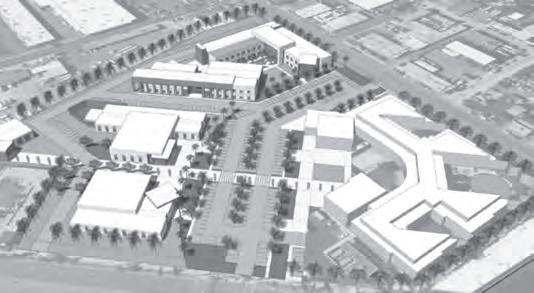
The proposed campus will feature crisis stabilization units, residential treatment, peerled respite care, and outpatient mental health services. County leaders say the project will replace a fragmented system with coordinated, whole-person care. The County is seeking up to $100 million in state funding through Proposition 1 to support construction.
The San Diego City Council has approved nearly $2 million in parking meter revenues to fund infrastructure repairs in the communities where the money was collected. The move pauses the City’s Community Parking District program as officials work to modernize parking management and improve transparency.
According to Transportation Director Bethany Bezak, the funds will help tackle urgent needs such as the 1,200 streetlight outages in Downtown. City crews will begin repairs immediately, using revenues to fix streetlights, sidewalks, and safety issues across affected neighborhoods. Residents can report repair needs through the Get It Done app or at sandiego.gov/get-it-done.
The City of San Diego’s new Safe Parking site in Point Loma, known as H Barracks, currently has over 100 spaces available for people living in their vehicles. Operated by Jewish Family Service, Safe Parking sites include restrooms, basic needs assistance, access to resources, mental health services and job training, and participants work with case managers to create individual housing goals.
To consolidate resources, the City will temporarily close its Aero Drive lot later this month, saving about $23,000 monthly in operating costs. With four active sites remaining, the program continues to serve over 1,000 people annually, connecting hundreds to permanent housing. Individuals in need are encouraged to schedule an intake session with JFS via an online form (secure.jfssd.org/site/ SPageServer?pagename=contact_safe_parking) or by calling 858-637-3373.
Crude oil, gasoline, diesel fuel, and other petroleum products can expose you to chemicals including toluene and benzene, which are known to the State of California to cause cancer and birth defects or other reproductive harm. These exposures can occur in and around oil fields, refineries, chemical plants, transport and storage operations, such as pipelines, marine terminals, tank trucks, and other facilities and equipment listed here:
https://www.wspa.org/proposition-65-notice-information/
The foregoing warning is provided pursuant to Proposition 65. This law requires the Governor of California to publish a list of chemicals “known to the State to cause cancer or reproductive toxicity.” This list is compiled in accordance with a procedure established by the Proposition, and can be obtained from the California Environmental Protection Agency. Proposition 65 requires that clear and reasonable warnings be given to persons exposed to the listed chemicals in certain situations. For more information go to:
www.P65Warnings.ca.gov/petroleum or call:
Full November CalFresh/SNAP Benefits Are Being Delivered to San Diego Beneficiaries
San Diego CalFresh/ SNAP beneficiaries are starting to see their full November benefits loaded on to their EBT cards.
The process began late Thursday, November 6th after a federal court ruled in favor of restoring full benefits during the government shutdown, according to the State.
With hundreds of thousands of residents at risk of losing food assistance, this investment provides immediate relief to organizations on the frontlines of hunger relief. Each $1.5 million grant will help expand emergency food distribution, support local farms, and ensure equitable access to nutritious food as federal resources diminish.
San Diego County is projected to lose more than $300 million annually in government funding, including an estimated $200 million in new costs or cuts to CalFresh, California’s version of SNAP. The loss of federal food benefits not only deepens food insecurity, it also removes $260 million from the local economy, jeopardizing both access to food and the livelihoods of small farmers.

The emergency investment will reportedly help offset these losses by providing immediate operational support to strengthen San Diego’s food-relief infrastructure and sustain Local Food Purchase Assistance (LFPA) partnerships which connect local growers to community food programs.
Benefits normally issued from the first to seventh have now been loaded on to EBT cards. Remaining benefits will be issued as regularly scheduled through November tenth.
Legal cases remain ongoing, and the County will provide more information as it becomes available. Information on food resources is available through the 211 San Diego webpage or by calling 211 San Diego. Additional resources including, food banks and pantries located throughout the region can be accessed using the Feeding San Diego interactive map or San Diego Food Bank interactive map.
In San Diego County, about 400,000 individuals receive CalFresh benefits, based on their income. For example, a family of four must make less than $5,360 a month to qualify.
San Diego Food Relief Groups Unite to Protect Access Amid Federal Cuts
As historic federal cuts threaten access to food assistance for hundreds of thousands of San Diegans, the Prebys Foundation — in partnership with Feeding San Diego and the Jacobs & Cushman San Diego Food Bank — announced on November 6, $3M in emergency funding to protect and strengthen the region’s food security network.
The grants are part of United for San Diego, a joint philanthropic initiative by Prebys Foundation, Price Philanthropies, and San Diego Foundation, created to support local communities impacted by cuts to federal programs that provide housing, food, and healthcare. San Diegans can donate at SDFoundation.org/ unity.
Board of Supervisors Approves Plan to Create Safety Net Bridge Program
The San Diego County Board of Supervisors has approved a plan to explore creation of a Safety Net Bridge Program aimed at preventing service gaps for residents who may lose MediCal, CalFresh, or other essential benefits due to recent federal policy changes.
The program would link community-based strategies to maintain access to healthcare, food, and social services. Proposed measures include expanding no-cost primary care through local providers, same-day prescription access, volunteer-driven medical services, and food distribution partnerships to reduce waste and improve nutrition access.
County staff will report back within 45 days with preliminary findings, followed by an implementation plan outlining costs and funding sources to launch the program.

Dr. John E. Warren, in his role as publisher of The San Diego Viewpoint and Chairman of the Board of Directors for the National Newspaper Publishers Association (NNPA), spoke to a rapt crowd of media industry publishers at the The National Association of Hispanic Publications (NAHP) convention on Friday, Nov 14, 2025. The convention’s theme, “The Power of Our Readers”, was held November 12 to 14 at the University of San Diego’s Joan B. Kroc School of Peace Studies. Dr. Warren, with his over 3 decades in publishing, shared his wisdom and insights on the challenges and opportunities facing ethnic media publications and their important role and impact on advocacy and public policy.
Encanto Community Gathers for Covered California Conversation at the Mental Bar
By Ike Hall Contributing Writer
On Wednesday, November 12th, about 25 media members, health executives, and San Diego community leaders gathered inside Mental Bar, a Black-owned coffee shop in Encanto. The gathering was hosted by Covered California, a state-run health insurance marketplace and one of the largest purchasers of private individual health plans in California.
Put plainly, Covered California lets Californians shop for private insurance plans offered by top insurers, and, for eligible consumers, it provides financial help to lower monthly premiums and out-of-pocket costs. It also uses its negotiating power to set strict standards for insurers that participate in the marketplace.

the broader middle class would face sharply higher premiums. Covered California projects a 76 percent average premium increase in San Diego County if the credits expire.
Altman explained, “Enrollment in the marketplaces more than doubled for people of color because of the tax credits. They reduce disparities.” The future of these subsidies will not be known until Congress meets to determine their fate in mid-December, which leaves families and enrollment counselors in a stressful limbo.
Dr. Monica Soni expanded on the stakes if the tax credits are not renewed. “A decade of infrastructure that allowed healthcare professionals to cover uninsured folks has been wiped out,” she said. “I am in fear that we are going to be in a worse place than 10 years ago. Four hundred thousand people are at risk. I am worried about someone in the middle of chemo or specialty care who might be left in the lurch.”
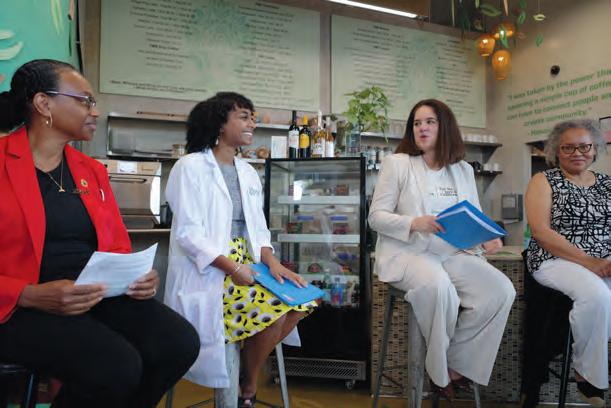
While very low-income residents often qualify for Medi-Cal, Covered California supports tens of thousands of middle-income families, young adults in their first jobs, and other working people whose employers do not offer affordable insurance. In San Diego County, more than 140,000 residents use Covered California plans, and the majority receive some form of financial assistance.
This “Community Conversations” event is part of a statewide outreach and media tour the agency is conducting to mark the start of the 2026 Open Enrollment period. This is the time when Californians can compare insurance plans and sign up for coverage for the coming year.
This enrollment period comes during a time of great distress for American healthcare. The nation is emerging from a government shutdown, medical costs continue to rise, and Congress has not yet decided whether federal subsidies will continue.
The panel featured Covered California Executive Director Jessica Altman, Chief Medical Officer Dr. Monica Soni, and Dr. Sharon Smith, former president of the San Diego Black Nurses Association.
With a suppressed tension in the room, much of the conversation centered on a looming challenge: the potential expiration of the federal enhanced premium tax credits. These government subsidies, enacted during the pandemic and made possible through the Affordable Care Act, have allowed many non–Medi-Cal recipients to afford private health insurance.
Without these tax credits, working families, young adults entering the job market, and
Dr. Sharon Smith, who led the San Diego Black Nurses Association for more than two decades, reflected on the historical and cultural stakes for Black communities. “A lot of Black folks were not receiving the proper care,” she said. She described how expanded coverage reduced emergency-driven care and increased access to preventive treatment for chronic conditions like heart disease, which affects the Black community disproportionately. “The more people that were covered, the fewer emergency-driven cases we saw.”
As a state marketplace, Covered California not only sets quality standards for participating insurers, but also plays a direct role in enrolling uninsured people into coverage. “Health insurance has been made to be as complicated as possible,” Altman said.
Throughout the hour-long conversation, the speakers emphasized the wide gaps between the healthcare system and everyday people, especially communities of color such as Encanto. Events like this are intended to bridge those gaps by connecting Covered California directly with community leaders who can help spread information and guide residents to enrollment support.
Covered California representatives reminded attendees that free, multilingual enrollment help is available across San Diego County, offering one-on-one guidance for comparing plans, checking subsidy eligibility, and determining Medi-Cal benefits.
Open Enrollment runs through January 31, 2026. Early enrollment is encouraged to avoid gaps in coverage.
Altman closed the event with a quote from Dr. Martin Luther King Jr., “The arc of history is long, but it bends toward justice,” affirming Covered California’s commitment to helping Californians remain insured despite rising costs and the uncertainty coming from Washington.
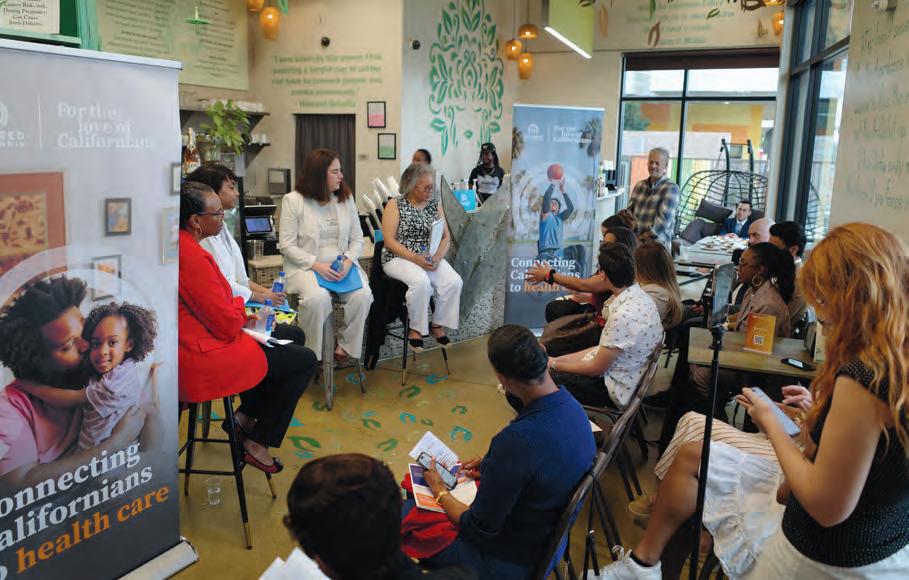



County Offers Tips to Stay Safe for Upcoming Storms
Tips for the Public
• In areas that often see flooding during rain, people should prepare their areas with sandbags to protect against flooding or to prevent soil erosion.
• Areas that have been scarred by fires can suffer additional damage by soil erosion. Sandbags can be placed to divert or redirect water, mud and debris away from your property.
County emergency services and public works road crews say people should stay alert and take precautions and drive carefully on the roads...
• P eople in the County’s unincorporated areas can report concerns by using the County’s Tell Us Now app, using the County’s online service request form, or by calling the service request hotline toll free at (877) 684-8000, or at (858) 694-3850 during normal business hours.
• The County’s Office of Emergency Services also has useful information about storm preparation on its website. And County Public Works has information about known low-water crossings on its Flood Control webcam page.
• The County also encourages the public to download the County’s Alert San Diego app from the Apple App Store or Google Play Store to have a personal disaster plan and go-kit.
Be Careful on the Roads
County emergency services and public works road crews say peo -

ple should stay alert and take precautions and drive carefully on the roads and offered the following tips. Avoid driving in heavy rain conditions. If the trip is necessary:
1. S low down to avoid getting into an accident. It takes longer to stop when roads are wet. Allow yourself at least an extra 15 minutes or so to arrive at your destination to adjust for slower traffic.
2. Turn on your headlights to see better and make it easier for other drivers to see you. It’s the law.
3. Try to drive toward the middle lanes as water tends to gather in outside lanes.
4. D efog your windows for better visibility. Rain can cause windows to fog up. Along the same lines, check your windshield wipers preferably before it rains again and replace them as needed.
5. Avoid driving through deep water because it can affect your brakes. If you cannot avoid it, test your brakes afterward to make sure they’ve dried out and are working properly.
6. T urn around, don’t drown. In heavy rain, never drive through a flooded roadway if you cannot see the pavement. Even a few inches of water
The fall COVID-19 vaccine season is starting slowly for Pfizer, with U.S. sales of its Comirnaty shots sinking 25% after federal regulators narrowed recommendations on who should get them.
Approval of updated shots also came several weeks later than usual, and Pfizer said Tuesday[November 4] that hurt sales as well. Many Americans get vaccinations in the fall, to protect against any disease surges in the coming winter. Experts say interest in COVID-19 shots has been declining, and that trend could pick up this fall due to anti-vaccine sentiment and confusion about whether the shots are necessary.
The Centers for Disease Control and Prevention last month stopped recommending COVID-19 shots for anyone, instead leaving the choice up to patients. The government agency said it was adopting recommendations made by advisers picked by U.S. Health Secretary Robert F. Kennedy Jr.
Before this year, U.S. health officials — following the advice of infectious disease experts — recommended annual COVID-19 boosters for all Americans ages 6 months and older. The idea was to update protection as the coronavirus evolves.
But that sentiment started to shift earlier this
running at the right velocity can sweep a car, and even a truck, and its occupants off the roadway and downstream. You should not walk or swim across a flooded roadway either.
7. Give the cars in front of you extra distance. The spray from their vehicles — particularly from larger trucks and buses — can hamper your vision. And giving extra space to the guy in front of you also gives you more time to brake or adjust if you need to do so.
8. K eep calm, don’t oversteer or stomp on the brakes if you start to hydroplane or skid when your tires lose traction with the wet road. The Department of Motor Vehicles says keep the steering wheel straight and take your foot off the accelerator so your vehicle can slow down slowly.
9. Stay focused. Remember, it’s illegal, and dangerous, to try to text or use a hand-held cell phone when you’re driving.
10. Slow down for the cone zone if you see highway or road workers ahead or to your side. Watch out for public works crews and equipment.
SOURCE: County of San Diego Communications Office
year when Kennedy, who has questioned the safety of COVID-19 vaccines, said they were no longer recommended for healthy children and pregnant women.
Dr. Amesh Adalja said vaccine rates have been “suboptimal” in recent years even for people considered a high risk for catching a bad case of COVID-19.
“That’s only going to fall off more this season,” the senior scholar at the Johns Hopkins Center for Health Security said recently.
The shifting guidance caused some confusion in September, once updated shots began arriving at drugstores, the main place Americans go to get vaccinated. Some locations required prescriptions or started asking customers if they had a condition that made them susceptible to a bad case of COVID-19.
The change in government guidance also created questions about whether insurance coverage would continue. A major industry group, America’s Health Insurance Plans, has since clarified that its members will cover the shots.
CVS Health announced earlier this month that it will not require prescriptions at its stores and clinics.
Pharmacy owner Theresa Tolle says this fall has probably been one of the more confusing seasons for her customers. Tolle runs the independent Bay Street Pharmacy in
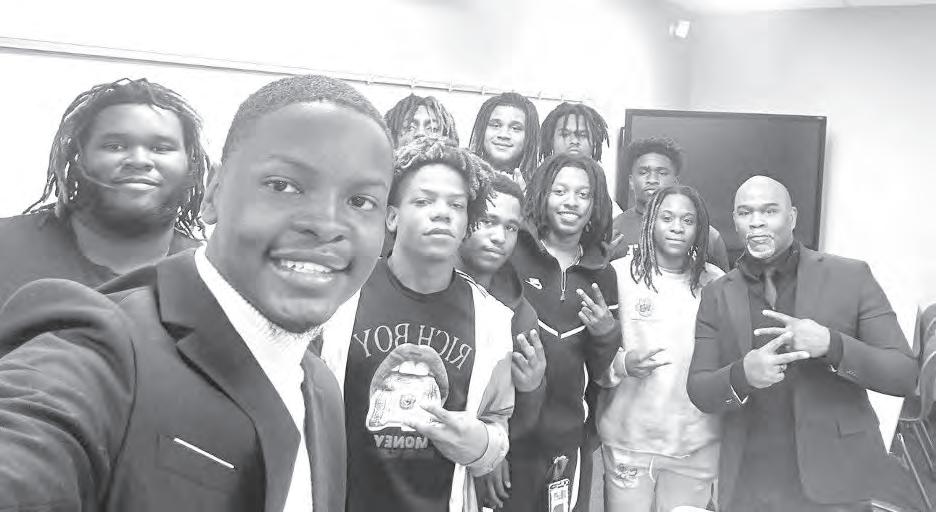
The Youngest Black Male Mayor in U.S. History Visits College Classroom Where 90% of Students Are Black Men
By Wayne ‘BC’ Kent Black History Is
There’s a powerful story out of Little Rock, Arkansas, that national media missed—one that sits at the intersection of race, youth leadership, faith, and education.
On November 11, 2025, the Honorable Jaylen Smith, mayor of Earle, Arkansas—the youngest Black mayor in U.S. history, elected at age 18—made a historic visit to Arkansas Baptist College (ABC), the only co-educational institution in America where over 90% of students are Black males. This all started when Davis, an already internationally known professor, researcher, and journalist/author with millions of readers, gave his students an assignment to write Mayor Smith, and he responded.
Smith didn’t visit for a ceremony. He came to speak to a classroom.
The conversation unfolded in Professor Edmond W. Davis’s U.S. Government course — a class assignment turned real-world civic engagement. The students, 98% young Black men, had written letters to elected officials; Smith not only replied, he showed up. What
followed was a rare and transformative moment of mentorship between a 21-year-old mayor and college students his own age — a genuine exchange on leadership, faith, and purpose that few cameras captured but every American classroom could learn from.
Mayor Smith spoke candidly about challenges as a young leader: critics calling him inexperienced, elders resistant to change, and the responsibility of representing a city while still in college. He described bringing a grocery store to Earle, reducing crime, and using his diverse trade skills — EMT, firefighter, mechanic, law enforcement — as a model for sustainability and self-reliance.
“This wasn’t a guest lecture,” said Professor Davis. “This was living history—a moment that showed what representation looks like when it walks into the room.”
This is more than a campus visit. It’s an Only in America story: a 21-year-old Black mayor born in 2004 speaking to peers born the same year—on a campus built on hope, history, and the belief that second chances can still change generations.
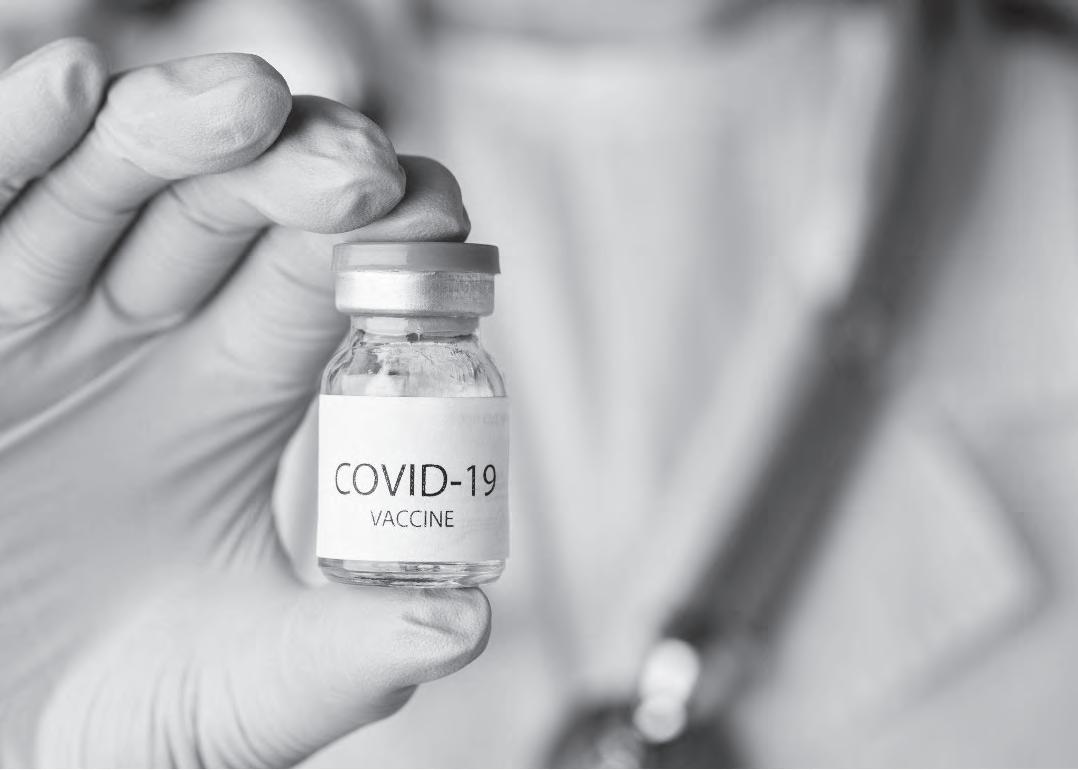
Sebastian, Florida.
She said her COVID-19 vaccine business has been busy because she has an older patient population. Many still want the shots. But she’s also had more customers tell her this year that they don’t want them.
“There’s just so many messages out there, they don’t know who to believe,” she said.
“I’ve had people tell me they are afraid of it when they’ve had it many times.”
Pfizer saw U.S. Comirnaty sales drop to $870
million in the recently completed third quarter from $1.16 billion in the same time frame last year. That came after vaccine sales rose the first two quarters of the year.
Pfizer also said Tuesday that sales of its COVID-19 treatment, Paxlovid, dropped more than 50% in the quarter both in the U.S. and internationally due to lower infection rates. Wall Street analysts also expect sales of the COVID-19 vaccine Spikevax from Moderna to tumble about 50% in the third quarter, according to the data firm FactSet.
